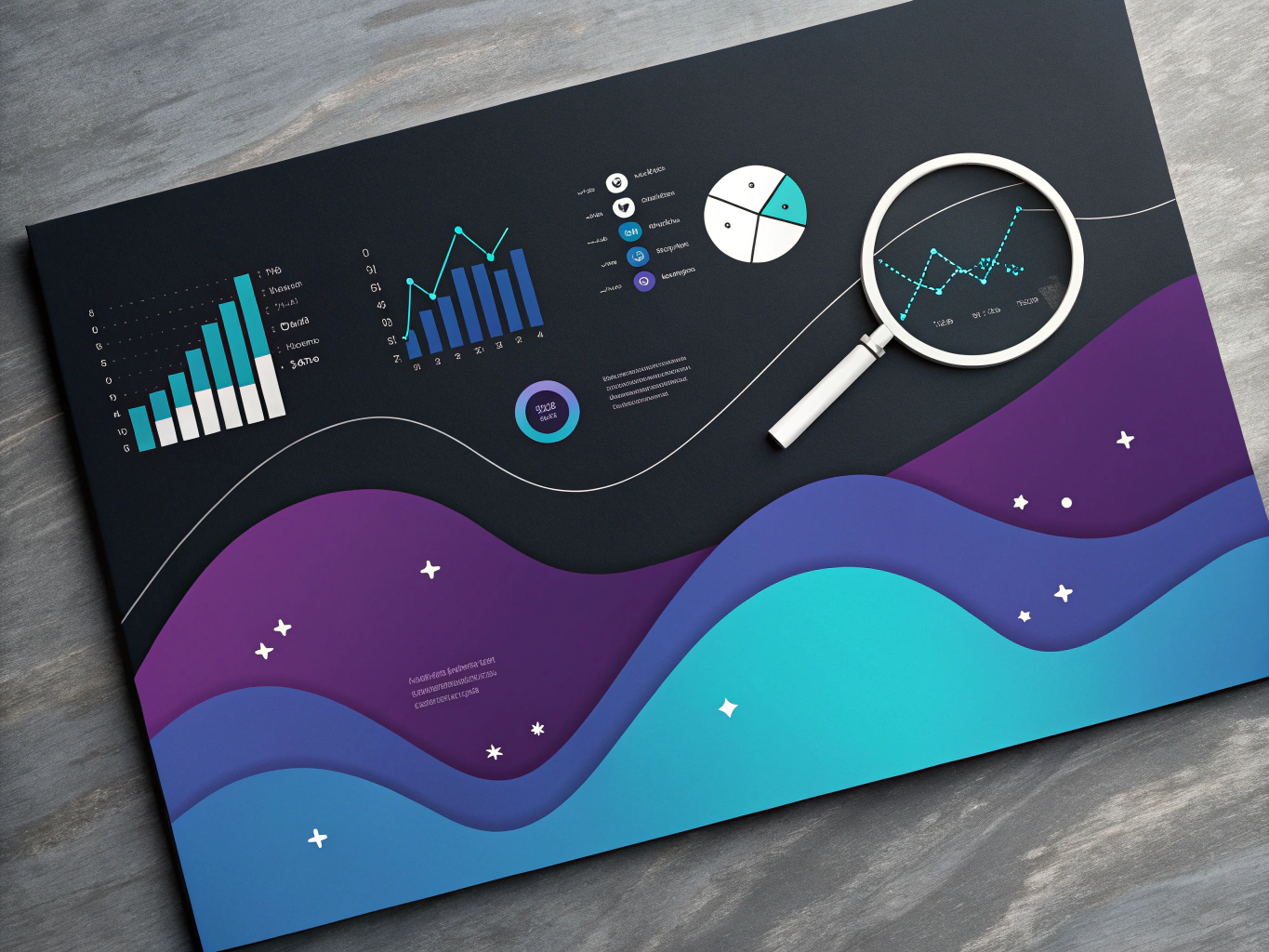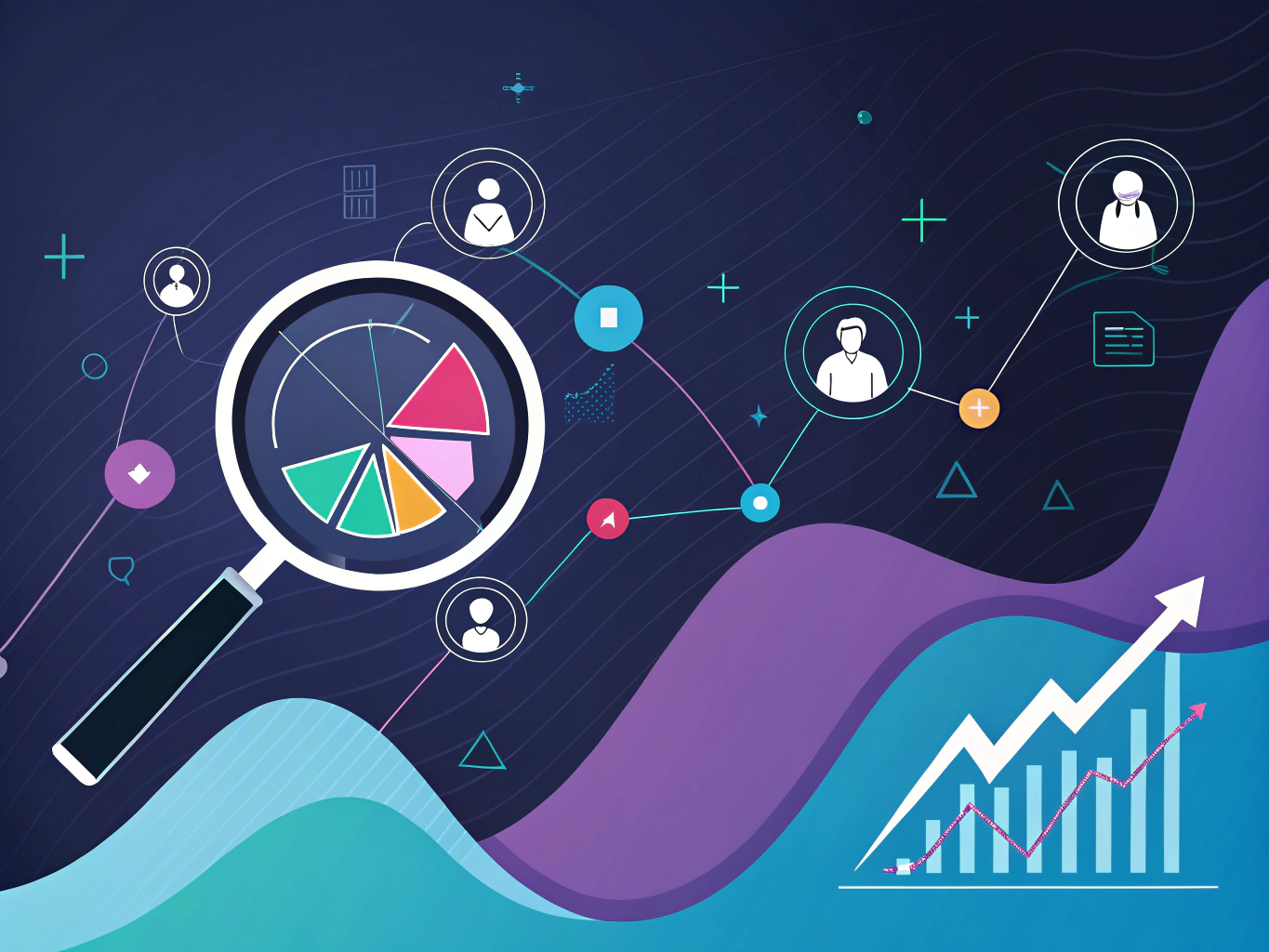Understanding Customer Demographic Profiles: More Than Just Numbers
Let’s be honest – most discussions about customer demographic profiles feel like reading a phone book written by an accountant who moonlights as a statistician. We’ve somehow managed to take one of the most fascinating aspects of business – understanding real human beings – and turned it into a soul-crushing exercise in data collection.

But here’s the thing: your customer demographic profile isn’t just a collection of age ranges, income brackets, and zip codes. It’s the story of the people who choose your brand over countless others. It’s the difference between shooting marketing arrows in the dark and hitting bullseyes with laser precision.
The Evolution of Customer Demographic Profiles

Remember when demographic profiling meant knowing whether your customers were “male/female, 18-35”? Those days are about as relevant as dial-up internet. Today’s customer demographic profiles are living, breathing ecosystems of information that tell us not just who our customers are, but why they do what they do.
Think of it like this: traditional demographic profiling was like trying to understand someone by looking at their driver’s license. Modern demographic profiling is more like having coffee with them every morning for a year. The depth and nuance we can now capture is revolutionary – and yet, most brands are still stuck in the driver’s license era.
The Core Components That Actually Matter
Before we dive into the nitty-gritty, let’s break down what makes a customer demographic profile worth its salt in 2024. It’s not just about collecting data – it’s about collecting the right data that tells a coherent story about your customers.
- Basic Demographics (the foundation, not the whole house)
- Psychographic Insights (the why behind the buy)
- Behavioral Patterns (what they actually do, not what they say they do)
- Digital Footprint (their online life story)
- Purchase Journey Mapping (the road they take to conversion)
Breaking Down the Building Blocks of Customer Demographics
Here’s where things get interesting – and where most brands either strike gold or strike out. Your customer demographic profile needs to be both broad enough to capture meaningful patterns and specific enough to be actionable. It’s like finding the sweet spot between “humans who buy things” and “left-handed jazz musicians who collect vintage typewriters.”
The Essential Data Points You Can’t Ignore
Age and gender? Sure, they matter. But they’re just the tip of the iceberg. The real magic happens when you start layering in things like:
- Digital Platform Preferences (TikTok vs LinkedIn isn’t just about age anymore)
- Content Consumption Habits (Are they readers, watchers, or scrollers?)
- Purchase Timing Patterns (The when is often as important as the what)
- Value Perception Indicators (What makes something “worth it” to them?)
The Psychology Behind Demographics
This is where it gets really fascinating. Your customers aren’t just walking data points – they’re humans with hopes, fears, and that weird thing where they say they want healthy options but always end up ordering pizza. Understanding the psychological drivers behind their decisions is what turns good demographic profiles into great ones.
Think about it: knowing someone is a 35-year-old urban professional with a $75,000 salary is useful. But knowing they’re a 35-year-old urban professional who impulse buys sustainable products at 11 PM because they’re trying to compensate for their day job in the oil industry? That’s gold.
The Technology Revolution in Demographic Profiling
 customer demographics?”/>
customer demographics?”/>Let’s talk about how AI is changing the game – and no, not in that “AI will replace all human insight” way that gets thrown around at tech conferences. AI in demographic profiling is more like having an incredibly detail-oriented research assistant who never sleeps and can spot patterns in millions of data points.
The tools we have access to now would have seemed like science fiction even five years ago. We can track digital body language, predict purchase patterns with scary accuracy, and understand customer segments in ways that make traditional demographics look like cave paintings.
The Tools That Are Actually Worth Your Time
Not all demographic profiling tools are created equal. Some are like Swiss Army knives – they do a lot of things okay but nothing particularly well. Others are like laser-focused power tools that do one thing exceptionally well. The trick is knowing which is which and when to use them.
If you’re looking to create a data-rich customer profile, it’s essential to choose the right tools that suit your specific needs.
The Power of Customer Demographic Profiling in Modern Commerce
Let’s be real – most businesses think they know their customers. They’ve got spreadsheets full of data, colorful graphs, and enough PowerPoint slides to wallpaper their office. But here’s the thing: knowing your customer’s age and zip code is about as useful as knowing their shoe size if you don’t understand how to turn that information into actionable insights.
I’ve seen countless ecommerce brands pour resources into collecting demographic data, only to end up with what I call “data paralysis” – that deer-in-headlights moment when you realize you have all this information but no idea what to do with it. It’s like having all the ingredients for a gourmet meal but no recipe to follow.
Breaking Down the Customer Demographic Profile Puzzle
Think of a customer demographic profile as your brand’s secret decoder ring. It’s not just about who your customers are – it’s about understanding the complex tapestry of factors that influence their buying decisions. Age, income, and location are just the beginning. The real magic happens when you start connecting these dots to reveal patterns that actually mean something for your business.
Core Components That Actually Matter
Here’s where most brands get it wrong – they collect basic demographic information without considering the full picture. Your customer demographic profile needs to include:
- Demographic Data: The basics (age, gender, income) but with context about how these factors influence purchasing behavior
- Geographic Insights: Not just where they live, but how their location affects their needs and preferences
- Psychographic Elements: The psychological factors that drive decisions (values, lifestyle choices, aspirations)
- Behavioral Patterns: How they interact with your brand across different channels and touchpoints
From Data Points to Customer Understanding

Here’s a truth bomb: demographic data without context is just numbers on a screen. I once worked with a DTC brand that was targeting “millennials” (because who isn’t?). Their customer demographic profile showed they were reaching their target age group, but their sales were tanking. Why? Because they forgot that “millennial” isn’t a personality trait – it’s just an age bracket.
When we dug deeper into their customer demographic profile, we discovered something fascinating: their most valuable customers weren’t defined by their age at all. Instead, it was their shared values around sustainability and social responsibility that united them. This insight completely transformed their marketing strategy and product development.
The AI Revolution in Customer Profiling
Let’s talk about how AI is changing the game for customer demographic profiling. It’s not replacing traditional methods – it’s supercharging them. Think of AI as your demographic data detective, spotting patterns and connections that human analysts might miss. At ProductScope AI, we’re seeing brands use our tools to analyze customer demographic profiles in ways that would’ve been impossible just a few years ago.
Making Your Data Work Smarter, Not Harder
The key to effective customer demographic profiling isn’t collecting more data – it’s making better use of the data you already have. Here’s what that looks like in practice:
- Cross-referencing demographic data with purchase history to identify high-value customer segments
- Using AI-powered analytics to predict future buying behaviors based on demographic patterns
- Creating dynamic customer profiles that evolve as your market changes
- Implementing personalization strategies that respect privacy while delivering value
The Reality Check: Common Pitfalls in Demographic Profiling
Let’s be honest – we’ve all made mistakes when it comes to customer demographic profiling. I’ve seen brands fall into the same traps over and over:
- Over-segmentation: Slicing your audience so thin you can see through it
- Analysis paralysis: Getting lost in the data instead of taking action
- Stereotype shortcuts: Making assumptions based on broad demographic categories
- Static thinking: Treating demographic profiles as one-and-done exercises
Building Profiles That Actually Work
The secret to effective customer demographic profiling isn’t in the tools you use – it’s in how you think about your customers. Stop treating them like data points and start seeing them as complex human beings with multiple, sometimes contradictory, motivations.
Your customer demographic profile should tell a story. Not a fiction novel, mind you, but a well-researched biography that helps you understand not just who your customers are, but why they make the choices they do. This is where the magic happens – where data transforms into understanding, and understanding drives growth.
Remember: your customers are constantly evolving, and your demographic profiling should evolve with them. The brands that win aren’t the ones with the most data – they’re the ones who best understand how to use that data to create meaningful connections with their customers.
Leveraging Customer Demographic Profiles for Business Growth

Look, we’ve all been there – drowning in demographic data but still feeling like we’re shooting in the dark when it comes to really understanding our customers. The truth is, a customer demographic profile isn’t just some static document gathering digital dust in your Google Drive. It’s a living, breathing blueprint of your business’s future.
Here’s what most people get wrong: they treat demographic profiling like it’s a one-and-done exercise. But in our AI-powered world, where consumer behaviors shift faster than TikTok trends, your customer demographic profile needs to be as dynamic as the markets you’re serving.
The Evolution of Customer Demographics in the Digital Age
Remember when demographic profiling meant checking boxes for age, gender, and income? Those days are as outdated as dial-up internet. Today’s customer demographic profiles are multidimensional matrices that blend traditional demographics with psychographic insights, digital behaviors, and predictive analytics.
What’s fascinating is how AI is transforming our ability to understand customer demographics. At ProductScope AI, we’re seeing brands use generative AI to not just analyze demographic data, but to predict future demographic shifts and adapt their strategies in real-time. It’s like having a crystal ball, except this one actually works.
Making Your Customer Demographic Profile Work Harder
Here’s the thing about demographic information – it’s not just about knowing who your customers are. It’s about understanding how to serve them better. Let’s break down how to turn your customer profile into actionable strategy:
- Cross-reference demographic data with purchase patterns to identify high-value customer segments
- Use demographic insights to personalize marketing messages at scale
- Align product development with demographic preferences and pain points
- Optimize pricing strategies based on demographic purchasing power
The Future of Demographics: Beyond Traditional Boundaries
The consumer population is becoming increasingly fluid, and so should our approach to demographics. We’re seeing the emergence of micro-communities that transcend traditional demographic categories. Your ideal customer profile template needs to account for these nuanced groupings.
Think about it – a 25-year-old sneakerhead in Brooklyn might have more in common with a 45-year-old collector in Tokyo than with their next-door neighbor. These are the kinds of insights that modern demographic profiling needs to capture.
Turning Customer Demographics into Competitive Advantage
The real power of customer profiling isn’t in the data collection – it’s in the application. I’ve seen countless brands sitting on goldmines of demographic data without realizing its potential. Here’s what separates the winners from the rest:
Examples of Demographics in Action
Consider how Nike uses demographic examples to create targeted product drops, or how Spotify’s Wrapped campaign leverages demographic meaning to create viral, personalized content. These aren’t just marketing wins – they’re masterclasses in demographic understanding.
The most successful brands aren’t just answering “What are the 5 consumer demographics?” They’re asking “How can we use these demographics to create experiences our customers didn’t even know they wanted?”
The AI-Powered Future of Customer Demographics
We’re entering an era where AI can help us identify customer demographics with unprecedented accuracy and depth. But here’s the catch – AI is just a tool. The magic happens when you combine AI’s analytical power with human intuition and creativity.
At ProductScope AI, we’re seeing brands use our PS Studio tools to generate marketing content that resonates with specific demographic segments in minutes instead of weeks. But the most successful campaigns always start with a solid understanding of who their customers really are.
Final Thoughts: Making Demographics Human Again
Let’s be real – at the end of the day, demographics aren’t just data points. They’re stories about real people with real needs, desires, and challenges. The most effective customer demographic profiles are the ones that help us see the humans behind the numbers.
Whether you’re a DTC brand just starting out or an established retailer looking to expand, your success depends on how well you understand and serve your customers. And that understanding starts with a well-crafted, continuously updated customer demographic profile.
Remember: Your customers are evolving. Your understanding of them should too. Now go forth and create demographic profiles that don’t just describe your customers – but help you serve them better.
For more insights on how to locate and analyze your market, check out this guide on customer analysis.
Related Articles:
- Customer Profiling Template: Build Ideal Buyer Personas
- Customer Profiling Tools That Transform Your ROI – ProductScope AI
- Customer Demographics: How to Analyze Your Audience
Frequently Asked Questions
What are the 5 consumer demographics?
The five key consumer demographics are age, gender, income level, education level, and geographic location. These categories help businesses understand and segment their market, allowing them to tailor marketing strategies to meet the specific needs and preferences of different consumer groups.
What is an example of a demographic profile?
A demographic profile might describe a 35-year-old female with a college degree, earning $75,000 annually, living in an urban area. This profile can be used by businesses to target marketing efforts, design products, or tailor services that cater to the preferences and lifestyle of this specific group.
What is the ideal customer profile demographic?
The ideal customer profile demographic varies depending on the product or service offered but generally includes characteristics that define the most profitable and loyal customers. For example, a luxury car brand might target middle-aged professionals with high income, while a tech startup might focus on young adults who are early adopters of new technology.
How to identify customer demographics?
Identifying customer demographics can be achieved through market research methods such as surveys, interviews, and analyzing purchase data. Businesses can also use analytics tools to gather demographic information from online interactions, allowing them to better understand their audience and tailor their offerings accordingly.
What is an example of a customer demographic?
An example of a customer demographic could be millennials aged 25-34 who are tech-savvy, have a moderate to high income, and live in metropolitan areas. This group might be targeted by companies offering digital services or trendy consumer electronics due to their likely interest and purchasing power.
About the Author
Vijay Jacob is the founder and chief contributing writer for ProductScope AI focused on storytelling in AI and tech. You can follow him on X and LinkedIn, and ProductScope AI on X and on LinkedIn.
We’re also building a powerful AI Studio for Brands & Creators to sell smarter and faster with AI. With PS Studio you can generate AI Images, AI Videos, Blog Post Generator and Automate repeat writing with AI Agents that can produce content in your voice and tone all in one place. If you sell on Amazon you can even optimize your Amazon Product Listings or get unique customer insights with PS Optimize.
🎁 Limited time Bonus: I put together an exclusive welcome gift called the “Formula,” which includes all of my free checklists (from SEO to Image Design to content creation at scale), including the top AI agents, and ways to scale your brand & content strategy today. Sign up free to get 200 PS Studio credits on us, and as a bonus, you will receive the “formula” via email as a thank you for your time.




